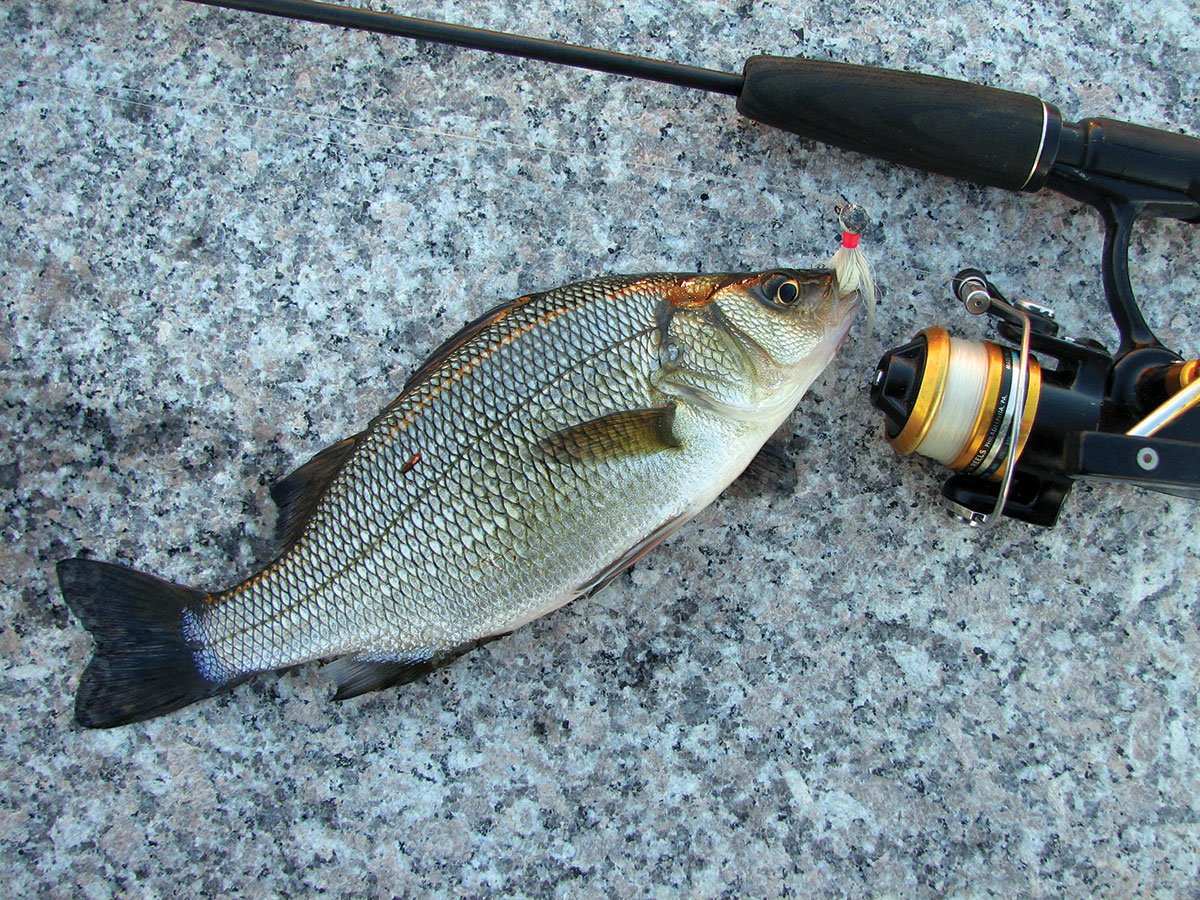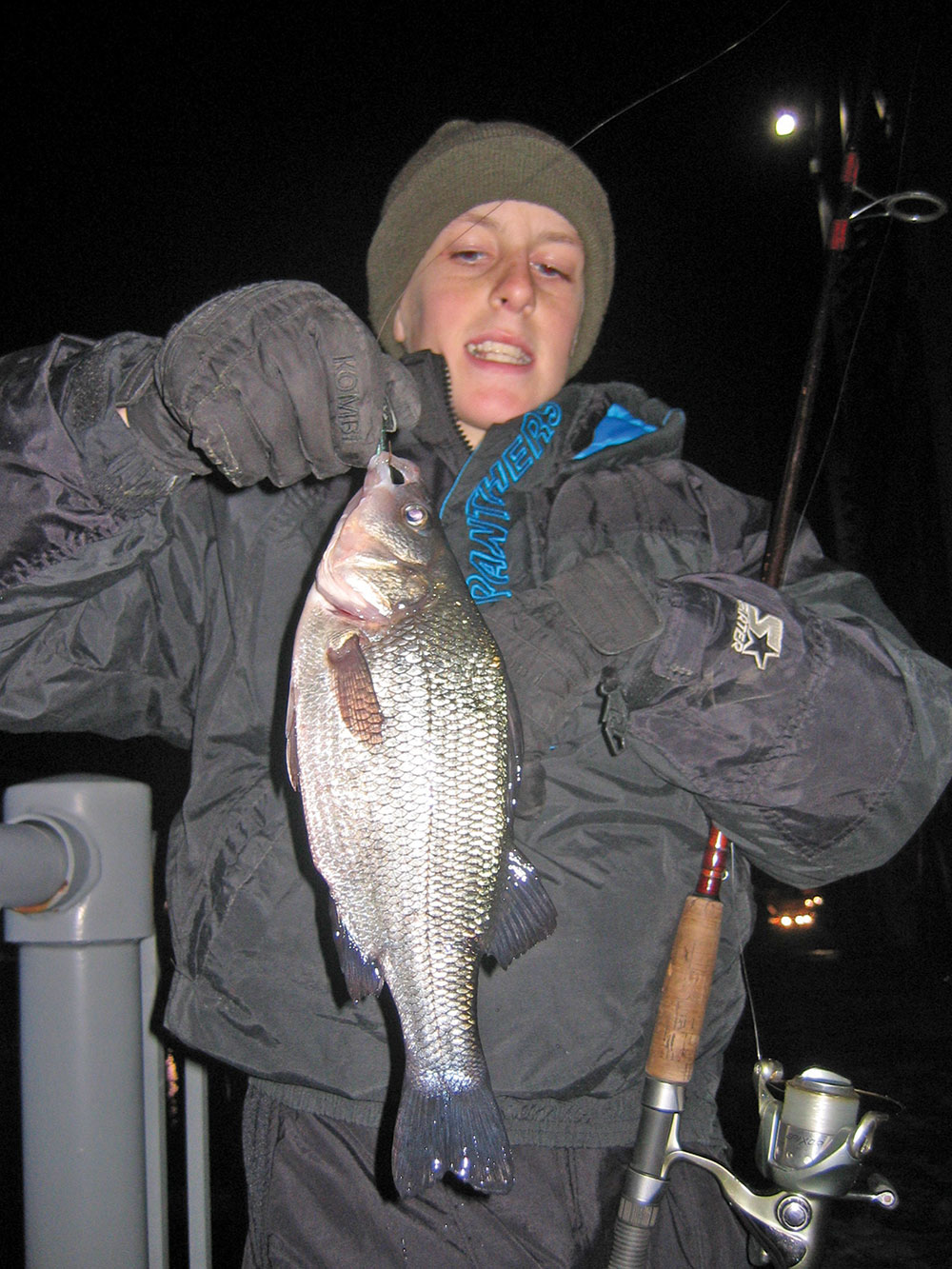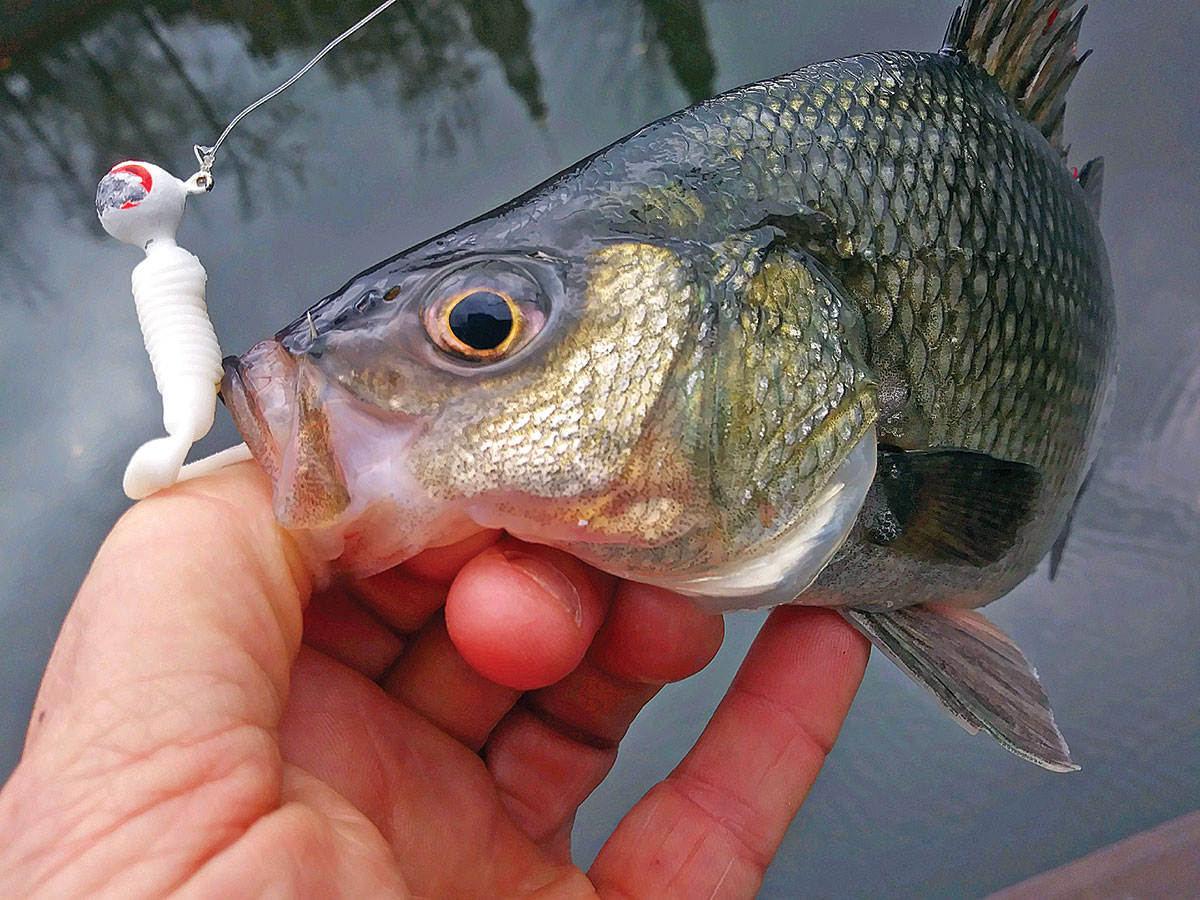Common in almost all tidal rivers of Southern New England, this cousin of the striped bass is a great off-season target.
By the time December rolls along, most of us will have exhausted our saltwater options. There are a few winter holdover locations for striped bass in southern New England, but for most of us, stripers and blues will be little more than a memory of a season past. Don’t fret, there is one more option out there that can be productive all winter long. White perch are generally plentiful and active in the winter. They inhabit most freshwater rivers, streams and creeks that empty into saltwater here in southern New England, yet few fishermen take advantage of this winter resource.

My first brush with white perch came decades ago when I was fishing in the winter for sea-run brown trout on the Cape. Back then I would occasionally catch these perch while fly fishing using shrimp flies and muddlers intended for the trout. Many of the places I’d fish on the Cape were mere brackish creeks that swelled with the rising waters and emptied with the dropping tide. The white perch would move around in these waters, something they usually do in most places, on a quest for food.
Back 10 or 15 years ago, I began catching good numbers of perch while fishing for holdover stripers in the winter in some of the rivers that empty into Narragansett Bay. I was astounded by the sizes and the numbers I often found as they would appear in schools where you could catch one after another. The current state record for white perch in Rhode Island is 2 pounds, 8 ounces, and I can tell you that I caught and released some that easily eclipsed that mark.
Let’s fast forward to last year. Once my striper fishing ended, I actively started fishing for white perch in some of the river systems here in Rhody. I didn’t always find them, but when I did, the action was often fast and non-stop. They proved to be a great winter option on light tackle.

White perch and their movements are generally a mystery that you must unlock to be successful. We know they inhabit just about every river system that flows into saltwater in southern New England. They often prefer to search for food such as shrimp, minnows and worms in brackish waters, though they move in and out of saltwater and freshwater. On some days I find good numbers of them in the wintertime in certain spots in brackish or even saltwater locations, but they may not be in these same spots the next day. They are opportunistic feeders, much like the striped bass they closely resemble. They also seem to disappear from brackish spots in the warmer months of the year; I’d guess that they pull back into freshwater at that time.
White perch also exist in landlocked lakes and ponds in southern New England. The basic difference between the landlocked freshwater white perch and those that reside in brackish water is size. Those living in those brackish waters are considerably bigger.
These are a fish made for light tackle. On average, they tend to be small, running 1 to 2 pounds, or 8 to 12 inches. Larger species might run 14 to 16 inches. One major characteristic of white perch is that they have small mouths for their size. That is a key when deciding what to use when fishing for them. Small lures are a must. Gear is also light to cast these small offerings, and I usually use a small, 5-foot trout rod with a small spinning reel and 6-pound test monofilament line. In many of the places I fish, a long cast is not needed, and just a flip of the lure usually does it.
Jigs and plastics are the most effective lure choices. I like to use small, homemade 1/8-ounce bucktail jigs with a plastic, 1-inch curly tail added. My jigs are all white, and I tie on the bucktail with red thread. I’ve also had some good success fitting my bucktail jigs with chartreuse bucktail. Another effective option is to use small barbed jigheads with just a curly tail added, a good choice if you don’t tie your own bucktail jigs. I’ve seen other fishermen using small, fluke-like bodies on jigheads and that also seems to work.

You will usually find these fish grubbing on or near the bottom so it’s important to work your lure right along the bottom with an occasional pull of the rod tip on the retrieve. Most of the time the fish will grab the lure when it is fluttering down after that rod tip pull.
Fly fishing also works on white perch, and much of my early success came on flies while fishing at the Cape’s rivers and creeks. There are some difficulties to overcome with fly fishing. First off, the productive zone to fish is right along the bottom. It’s tough to get a fly to creep along the bottom. I used fast-sinking fly lines, and I added weight to my flies to get them to sink at a faster rate. Secondly, fly fishing can be mighty cold on the hands in the dead of winter. You can fish with gloves when using spinning gear, but when fly fishing, it’s not so easy or practical. Still, I used to do it and adapted.
In recent years, I have caught white perch in river systems that dump into Narragansett Bay as well as those that exit the salt ponds along the Rhode Island oceanfront. You won’t see these fish jumping or breaking water. They feed along the bottom in the wintertime, and it is a matter of exploring, casting and finding them. So, moving around and covering a lot of water is important.
White perch can also be caught at night, and over the years I have landed good numbers of them in the dark. At night the best places to fish for them would be in lighted spots where bridge or pier lights cast a shadow line along the water. The perch tend to move in and out of these shadow lines to intercept small baitfish or other prey items much like stripers do.
White perch offer a light tackle option for those looking to fish for something in the winter in ice free waters here in Southern New England. At times they can offer fast fishing if you find schools and the places where they feed. Your best bet is brackish river and creek waters. White perch can be an exciting option for those cabin fevered fishermen looking to bend a rod in the dead of winter.


